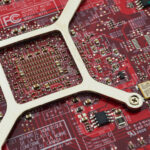Oil Interceptor Pumping: Keep Your Kitchen Running Efficient
Ever pondered the function of a compact device in averting business culinary plumbing catastrophes? Oil interceptor cleaning goes beyond mere upkeep—it’s crucial for efficient restaurant culinary waste handling. These traps, vital for collecting fats, oils, and grease (FOG) produced during meal preparation, avert blockages. Without consistent cleaning, they can clog, leading to costly fixes and operation interruptions. Let’s delve into the importance of grease trap pumping and its role in maintaining a seamless kitchen functioning, all while complying to environmental standards.
Understanding Oil Traps and Their Significance
Grease traps are essential for the smooth operation of business culinary spaces and meal handling establishments. They capture grease, fats, and solid refuse before they reach the drainage system. This role is crucial for maintaining culinary hygiene. It’s essential to grasp how these interceptors function to make certain they operate effectively and maintain a sanitary working space.
What are Oil Traps?
A grease trap, also known as a septic tank pumping near me, is a device designed to collect fats, oils, and grease (FOG) from wastewater. Placed in the pipework of culinary spaces or food serving establishments, it stops these materials from entering the sewer system. This prevents clogs or clogs in pipes, avoiding expensive repairs and potential hygiene issues.
How Do Grease Traps Function?
The functioning of grease traps is depends on gravity separation. Effluent goes into the interceptor, where heavier solids settle at the base. Meanwhile, less dense grease and oil float to the surface, creating a layer of FOG. This setup enables cleaner liquid to leave the interceptor and flow into the sewer system.
Frequent inspection of grease traps is key for their optimal functioning. Maintenance includes taking out collected FOG and particles to prevent spillage and system breakdown. Proper fats, oils, and grease disposal through prompt upkeep ensures culinary spaces operate seamlessly and ensures hygiene.
Common Problems with Grease Traps
Grease interceptors are vital for maintaining culinary spaces clean and efficient, particularly in the meal service industry. Neglecting them can lead to numerous problems that affect operations. Knowing these problems aids in focusing on drainage system maintenance for better functionality.
Blockages and Obstructions
Blockages and obstructions are significant worries with grease interceptors. They often originate from fats, oils, and greases (FOG) accumulation. This buildup can block water flow, causing drainage clogs. Thus, frequent drain line clearing is crucial to prevent these blockages. Consistent checks help spot obstructions early, preventing larger issues.
Foul Odors and Insect Invasions
Ignoring grease traps also causes foul odors and pest invasions. Accumulated organic matter causes bad smells, making the kitchen undesirable to occupy. These odors draw insects, heightening hygiene dangers. A regular maintenance schedule for grease traps is key to managing meal serving industry refuse effectively. It guarantees a sanitary, pest-free space, promoting a safer culinary atmosphere.
Grease Interceptor Cleaning: Crucial Upkeep for Your Kitchen
In the world of restaurants and business kitchens, grease trap cleaning is paramount for maintenance. Making sure your grease trap stays in top shape is essential for both functional efficiency and environmental compliance. It’s important to know the best pumping frequency and to recognize indicators that signal the necessity of maintenance. This knowledge can greatly lower expenses and conserve time over time.
Frequency and Planning of Pumping
Choosing the right pumping frequency for grease interceptors hinges on several factors. The capacity of the trap and the amount of fats, oils, and grease (FOG) your kitchen produces are key factors. Generally, it’s advised to clean grease traps every 1 to 3 months. Frequent inspections help ensuring seamless functioning and compliance to regional legal standards.
Signs That Your Oil Interceptor Needs Pumping
Being aware for signs that your grease interceptor needs pumping can avoid major issues. Watch for these indicators:
- Slow drains: If sinks drain more slowly than normal, it could indicate the grease interceptor is full.
- Regular pipework backups: Frequent backups indicate a grease interceptor having trouble to handle waste amount.
- Foul smells: A bad odor near the interceptor indicates it’s necessary for pumping.
Addressing these signs promptly enhances functioning and ensures ecological compliance for dining establishments. Consistent upkeep avoids expensive repairs and promotes a hygienic culinary environment.
Benefits of Frequent Oil Trap Upkeep
Frequent maintenance of grease traps is essential for your kitchen’s effectiveness and operation. A regular schedule for checks and clearing avoids interruptions and ensures a secure, hygienic culinary space. This proactive method is key to a efficient kitchen.
Avoiding Expensive Repairs
Proactive upkeep assists kitchen operators spot and resolve issues early. Regular inspections identify blockages and blockages, avoiding expensive fixes that could halt operations. Each maintenance session ensures grease interceptors function well, reducing the chance of plumbing breakdowns and emergencies.
Improving Kitchen Sanitation
Regular upkeep of grease interceptors boosts kitchen sanitation. It lowers grease and meal particles, reducing the danger of bad odors and bacteria. A sanitary grease trap provides a more secure culinary space and complies with meal safety standards, essential for patron contentment. Efficient upkeep has a major beneficial effect on kitchen operations.
| Advantage | Description | Effect on Kitchen Operations |
|---|---|---|
| Financial Benefits | Reduces the risk of unexpected plumbing problems that cause high repair costs. | Ensures continuity of operations without unplanned interruptions. |
| Enhanced Hygiene | Minimizes bad smells and bacteria linked to grease accumulation. | Creates a clean and safe environment for meal cooking. |
| Compliance | Fulfills legal standards by ensuring cleanliness. | Avoids penalties and legal issues due to substandard kitchen sanitation methods. |
Choosing the Right Grease Interceptor Cleaning Service
Choosing a trustworthy grease trap maintenance provider is essential for ensuring top performance in restaurants and business culinary spaces. It’s essential to select a company with extensive expertise in grease trap maintenance. Firms like Grease Trap Pumping Company guarantee compliance with local standards and offer thorough maintenance to keep your grease interceptors functioning.
Expertise and Expertise in Offerings
A well-known service has a demonstrated history in managing grease interceptors effectively. Their experience in business pipework offerings allows them to identify potential problems in advance. With experienced experts, companies can expect detailed maintenance and upkeep schedules tailored to each kitchen’s unique needs. This approach extends the longevity of the drainage system.
Environmental Accountability in Refuse Management
Provider excellence isn’t the sole factor; environmental compliance is equally important. The right grease trap maintenance service emphasizes sustainable refuse removal methods. Effectively managing the gathering and removal of grease and solids demonstrates a dedication to sustainability. By selecting a provider that matches with these principles, companies can guarantee their grease interceptor upkeep is both efficient and environmentally responsible.


